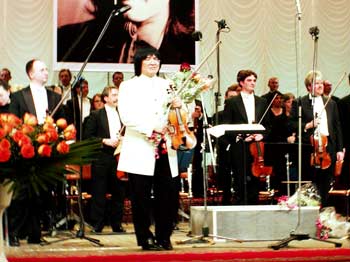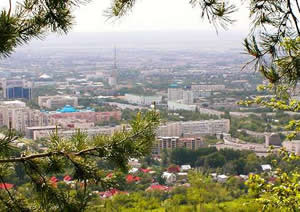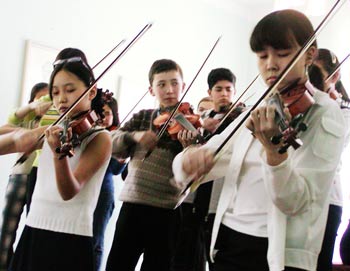Isolated in the steppes of Kazakhstan, Baikonur is the world’s oldest and largest cosmodrome. Now, the former Soviet military facility is being transformed into a purely civilian satellite launch pad. The country hopes it will become a second Kennedy Space Center.
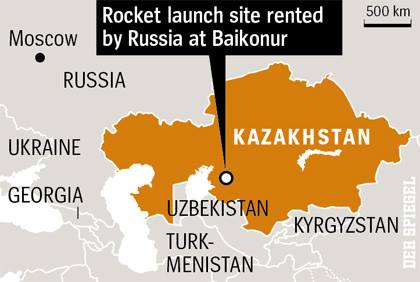
It is 3 a.m. Wisps of fog drift across the vast, empty steppes of Kazakhstan. All of a sudden, there is a loud roar, and a blindingly bright beam of light penetrates the hazy sky.
“Go, Proton, go!” shouts Frank McKenna, as he stands on the observation deck with a Western delegation. Proton is the name of the rocket that is sluggishly pushing its way into the night sky from Launch Pad 39 carrying a tank filled with 500 tons of highly explosive fuel.
The normally affable American seems tense. In a sense, he is the commander of this spaceship. McKenna is the president of International Launch Services (ILS), which sells mission and launch services from his office outside Washington. His customer base is made up of 35 satellite operators from 15 countries, which purchase one-way tickets into orbit.
Although this launch in Baikonur is nothing out of the ordinary, there’s a lot on the line for McKenna. A series of problems have damaged his company’s reputation. Since 2006, the company has lost one satellite a year during launches, and now the space center is having to fight to regain its customers’ confidence. To this end, McKenna has established a comprehensive quality assurance plan.
McKenna has been in the rocket business for a number of years. His company finds new customers, negotiates agreements, supervises the production of rockets in a factory near Moscow and monitors launches in Baikonur. McKenna spends most of his time, though, dealing with coveted US export licenses, which are one of the tools used to keep US satellite technology out of the hands of spies.
With McKenna’s help, Russia is currently attempting to expand Baikonur’s central role in the satellite business. The Russian military is scheduled to have completely withdrawn from the complex by 2010. After that, the spaceport will be put to exclusively civilian use, which will make it possible to launch even more commercial satellites into space from Baikonur.
Old Enemies, New Friends
Suddenly a whisper passes through the room. A tall, older man is standing in the doorway. “Today’s launch isn’t really all that special,” growls Leonid Gurushkin, the Proton program’s technical director. Gurushkin has worked in Baikonur for more than 40 years, and he has monitored 300 flights into space. “We are the only ones who can launch rockets on an industrial scale.”
The world’s oldest and largest spaceport is almost three times the size of Luxembourg. It stretches across a barren wasteland of sand and sparse vegetation, a place where the skies are clear 300 days a year. The summers are brutally hot, and the winters bitterly cold. Crumbling barracks are interspersed among the 50 launch pads, and the endless network of streets within the compound is randomly peppered with roadblocks.
“In the past, collaborating with Americans would have been my worst nightmare,” says Gurushkin. Baikonur was once Russia’s most important base for launching intercontinental ballistic missiles. To keep the site as secret as possible, it was deliberately named after the small city of Baikonur more than 300 kilometers (186 miles) away. To this day, visitors are not permitted to bring GPS navigation devices onto the grounds.
After the collapse of the Soviet Union, the cosmodrome was suddenly located in a different country. Since then, Russia has been using the site as a tenant of Kazakhstan. Moscow is reportedly paying about $100 million (€80 million) a year in rent — or roughly what it costs to launch a single rocket.
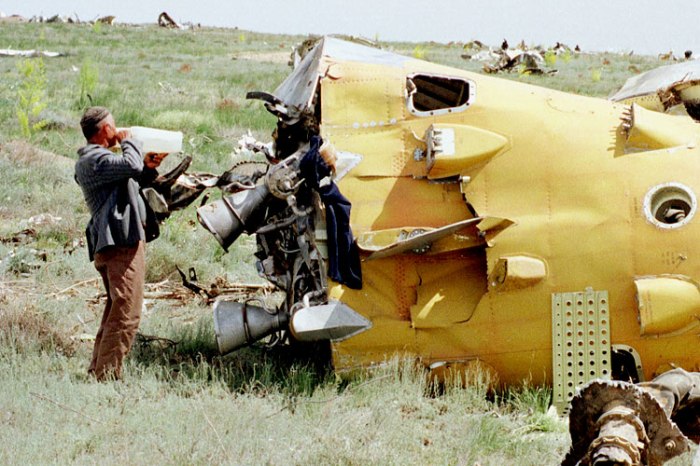
In 1995, the Russians teamed up with the Lockheed Martin, the American aerospace and rocket-making company, to establish ILS. Both sides have benefited from the arrangement. “The joint venture was the best thing that could have happened to us,” says Gurushkin.
Business is expected to get even better once the military completes its withdrawal. In fact, after downing a few drinks, Gurushkin positively raves about what he calls a new golden age. He fantasizes about souvenir shops, tour buses and visitors from around the world — not unlike what you would find at Florida’s Kennedy Space Center.
But until then, only paying customers and their guests are allowed to watch their satellites being launched at Baikonur. The Astra 1M, which is roaring into space on the Proton rocket today, weighs more than five tons. The satellite is like a transmission tower in space capable of broadcasting more than 70 television programs at the same time.
Once it reaches its geostationary orbit about 36,000 kilometers (22,360 miles) above Earth, the primary function of the Astra 1M will be to expand high-definition TV (HDTV) programming. Television viewers with a satellite dish will now be able to receive things like MTV video clips and other programming via the new satellite.
What Goes Up…
Back on Earth, the thinly populated Kazakh steppes are littered with spent rocket stages that lie about like discarded packaging. Even before the night ends, scrap metal dealers in all-terrain vehicles will be rushing about to the impact craters and recovering the scrap metal, which they will either sell or pound into cooking pots.
The spent rocket stages are not the only thing to rain back down on the Kazakh steppes. There is also the highly toxic rocket fuel, which might pose a health risk to children, according to the scientific journal Nature. Nonsense, says a Russian engineer in Baikonur. Rocket fuel, he claims, works like fertilizer. As he sees it, the rocket stage crash sites are so fertile that they practically turn into jungles.
